The Spicebush Swallowtail butterfly (Papilio troilus Linnaeus ) is a large, dark swallowtail native to Eastern North America. The wings are black with a single line of ivory spots along the outside edge and the “ tails “ along the edge of the hind wings from which the swallowtails get their common name. Females have a blue wash and males a greenish blue wash on the upper side of the hind wings. Wingspans range from three to four inches, making swallowtails our largest butterfly. These butterflies are found especially near woodlands, where the males patrol looking for females, but they can turn up in any open areas such as fields or roadsides as they search for nectar sources and larval host plants. Flight in New England is from April- October. Look for them when Japanese honeysuckles begin to bloom in the spring.
The Spicebush Swallowtail has to be one of the most spectacular caterpillars of any of the North American Lepidoptera. Tucked in a leaf shelter during the day, these caterpillars often go undiscovered unless you know how to find them. First of all, check out the main larval host plants- principally spicebush, sassafras or sweet bay- and then look for leaves that are folded in half length- wise. Gently open the leaf and see if there might be a caterpillar inside. The caterpillar has eye spots on the thorax and usually the head faces the outward tip of the leaf, where it will resemble a little snake. It gets more spectacular in appearance as it progresses through its instars. The eye spots are a good defense against many a bird that would otherwise have them for dinner.
Swallowtail caterpillars also have another defense mechanism- a gland called an osmeterium that can be flashed from the thorax when the caterpillars is alarmed. It emits a disagreeable odor that is thought to deter predators. Sometimes just jostling the branch where the leaf shelter is located is enough to cause the caterpillar to use this line of defense. You will be alerted to its presence by the foul aroma, and need only look for the source nearby.
When caterpillars are ready to pupate they turn an orange or yellow color t as feeding stops. The host plant may not be the same plant where the caterpillar will pupate, and they will often travel some distance to find a suitable place for pupating. Like all swallowtails, the chrysalis is formed by the caterpillar hanging in a head up position. Feet are tied down with silk and the thorax is hung away from the supporting stalk or branch by means of a silk “girdle “. The swallowtail chrysalis will have a set of “ ears “ where the head is, bearing a resemblance to Batman. Chrysalises are green if the butterfly will emerge in the current year, and are brown if they will overwinter until eclosing the next spring.
To attract the butterflies to your property, plant good nectar sources that will provide food from spring to fall. Buddleia davidii is a favorite long- season nectar source for many butterflies. Bush honeysuckle, Lantana, goldenrods, Joe- Pye weed, purple coneflower and milkweeds are some plants that are attractive to swallowtail butterflies. In spring, phlox is a good source of nectar, and geraniums, impatiens and marigolds are good annuals to use. The Spicebush Swallowtail is singular in that it is able to enter the flowers of certain lilies like day lilies and Tiger Lilies to obtain nectar that is deep in the flowers. They are able to reach the nectar and then back out again with no harm done.
Including larval host plants on your property may encourage females to lay eggs nearby, making it possible to enjoy this creature in all of its life stages.
Pamm Cooper All Photos Copyrighted 2014 by Pamm Cooper
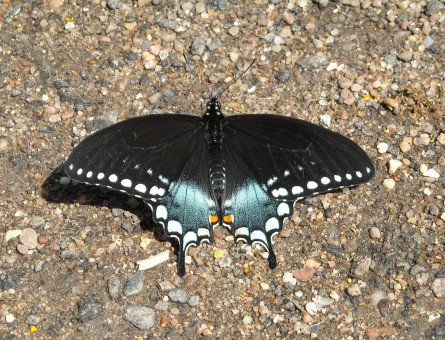
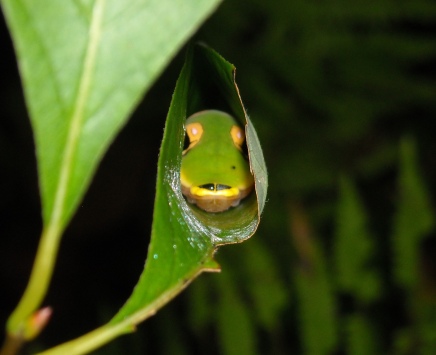
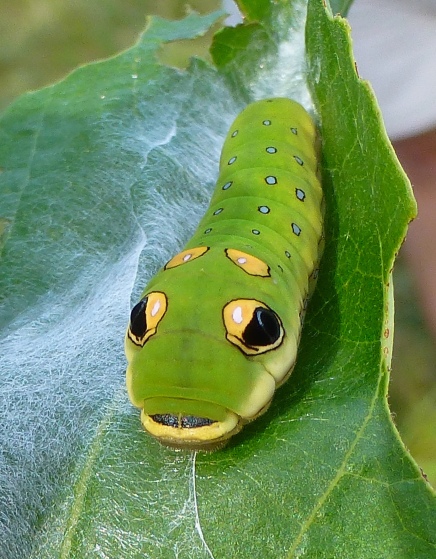
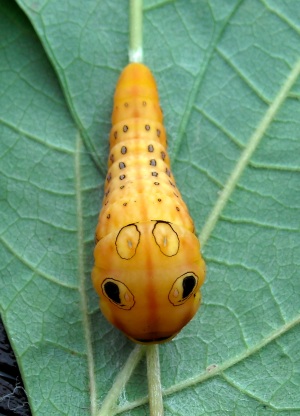
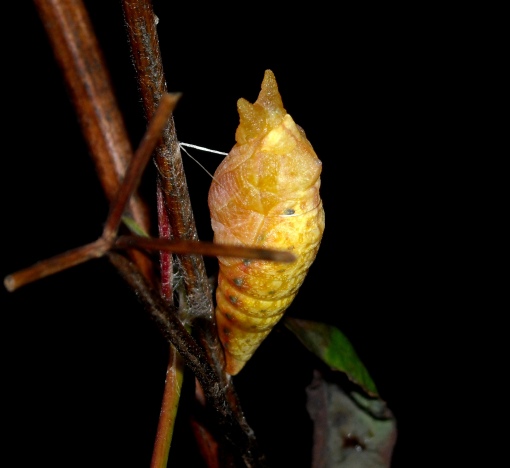
July 5, 2014 at 11:19 pm
Knotweed a/k/a wild morning glory seems to be taking over the meadow along with Osage orange, the mile a minute vine, and that palmate vine. I’ve tried hand pulling and killing off the seed but the birds just keep spreading the stuff.
Any helpful ideas to help with these damn grasshoppers?
July 7, 2014 at 5:16 pm
Nature loves a vacuum! After you have pulled the weeds and created a bare spot, plant a desirable plant. The invasive weeds will keep coming in to fill that spot. Encourage the good plants to grow while removing the invaders.